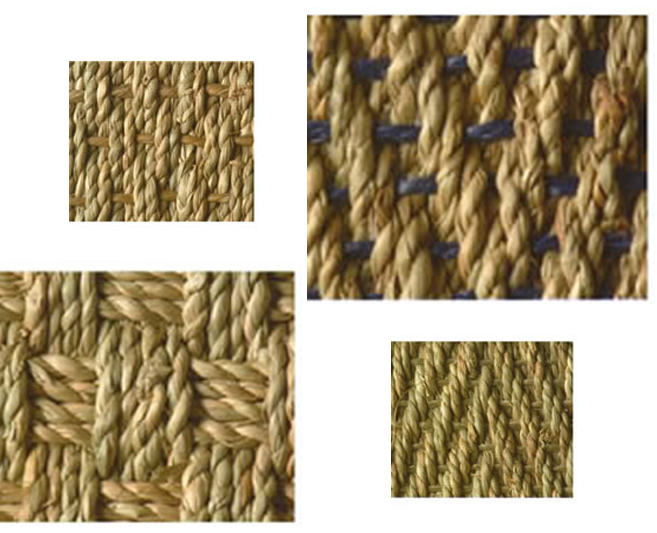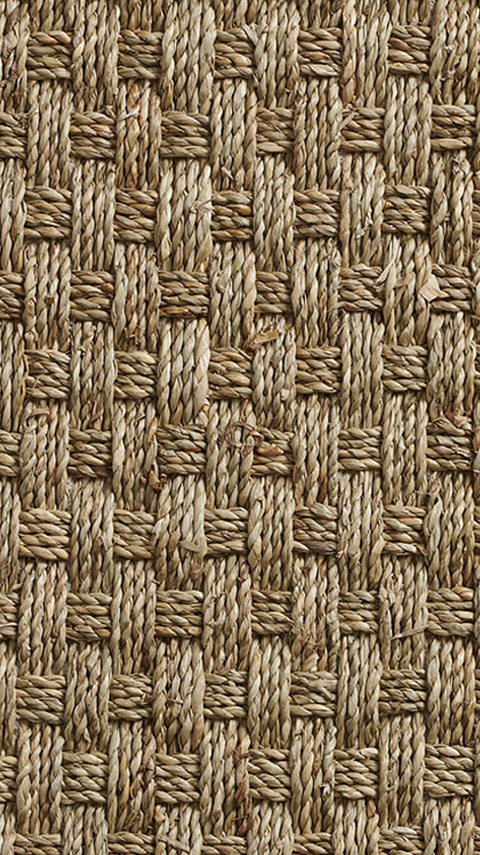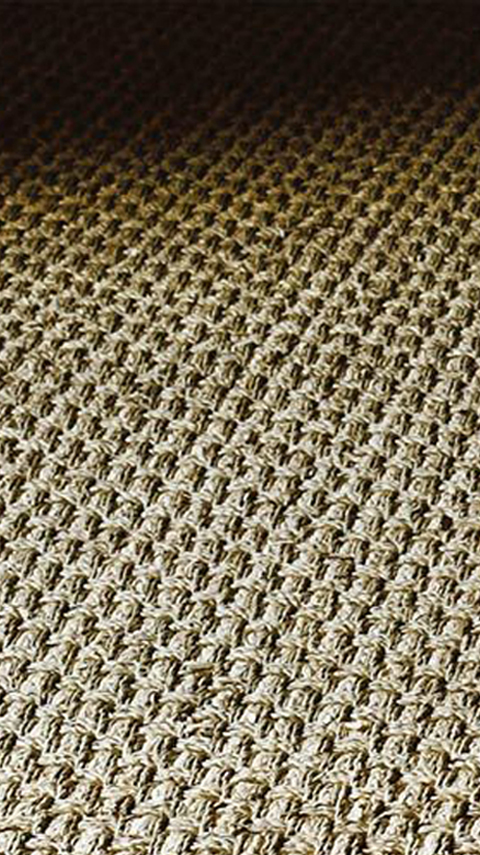Natural Seagrass Floor Covering
A Buyers Guide
For an idea of seagrass simply think of picnic baskets or perhaps rush matting. It is a relatively hard fibre in comparison to sisal, jute or coir but is woven with similar weave patterns (principally basketweave and herringbone).
Run a finger along its weft and you will attribute an almost waxy feel to seagrass. This is a natural quality of a plant whose natural habitat is under water and therefore needs to maintain integrity of structure whilst wet.
Consequently,it shows more resistance to stains than sisal or coir which are both absorbing by default. If Intec stain protection isn't in your budget then seagrass may be the right material for you. Price wise it compares very favourably to sisal - think in terms of half the price and you'll not be far off.


The intrinsic resistance to moisture absorbtion means seagrass is not suitable for dyeing and therefore all patterns are approximately the same colour (again think rushes or even wheat). If you fancy something thats been treated to the whims of a designer then sisal is probably a more appropriate route for you. Seagrass is very traditional in appearance.
Attempts to make it a different have been achieved in the weave, either by large basketweave bands or by threading coloured strands (sisal/jute?) through it. Fine seagrass weaves have a greener hue to them because the plants are harvested earlier.
The hard nature of seagrass means it is not going to be the ideal choice for lying around on if that is an integral part of your lifestyle. It isn't as rough as coir or sisal - it's just harder (and jus
Seagrass is given a heavy domestic rating which makes it suitable for high traffic rooms. If you had to choose a natural plant fibre for bathrooms or kitchens, then it would be seagrass. The truth is you are best avoiding wet areas, even with seagrass.
Intec protective coating can be applied to seagrass despite its waxy, impervious nature and if you just HAVE to have it in a kitchen or bathroom then this is a must.
We shouldn't even think about selling seagrass for stairs. Apart from its natural resistance to bending, the hard waxy surface is considered too slippery and hence dangerous for anything but flat rooms. Some people do insist on it for stairs so we always fit it sideways on to get extra grip.
Seagrass can be made up into rugs - The Alternative Flooring Company offer a rug making service with fancy edgings.
Most people tend to have seagrass fitted on underlay, which needs to be the urethane type as opposed to ribbed rubber. Gripperods are not really appropriate because seagrass is hard and therefore does not sit in the gap between the gripper and wall - it tends to arch leading to soft, raised "edge bubbles".
Sticking (or stapling) the underlay to the floor, then sticking the seagrass to the underlay is the preferred method of laying, and probably the only one that gets a guarantee. Of course, you can have the seagrass glued straight to the floor without underlay which will give a firmer feel - more conducive to moving chairs upon (think home office/dining).Sticking (or stapling) the underlay to the floor, then sticking the seagrass to the underlay is the preferred method of laying, and probably the only one that gets a guarantee. Of course, you can have the seagrass glued straight to the floor without underlay which will give a firmer feel - more conducive to moving chairs upon (think home office/dining).

Seagrass grows in saline, marine environments which resemble large "submerged meadows" of grassland. The plant relies on photosynthesis and consequently prefers shallower waters where this is process is more favourable.
Flooring grade seagrass has probably been produced in Brazil or in Chinese paddy fields where it is subjected to sea water flooding before harvesting.
There are many species of seagrass and beds vary in their diversity depending upon climate - temperate zones default to single or few species whilst tropical zones are frequently found with up to 13 species.
Seagrass is supportive of a wide diversity of feeding life forms ranging from birds to fish to marine mammals and molluscs. It is very useful for protecting coastal environments where its proliferation causes sedimentation to stabilise against water current erosion.
The resulting shelter encourages aquatic life that benefits from a fast replenishing food source, and in turn it creates excellent fishing grounds. Despite its excellent environmental adaptation, seagrass environments are declining in the face of human activity such as over fishing and mechanical destruction.
Human activity has also upset the balance of natural seagrass environments through the introduction of fertilisers, especially nitrogen and phosphorus. This is not only toxic to seagrass but causes the overpopulation of algae. This reduces the plant's ability to photosynthesise by blocking sunlight.
The resultant areas of decaying seagrass stocks also encourage the algae population and results in an unfortunate feedback loop. AND...if this wasn't enough negative human tampering, over fishing is further upsetting the natural balance by removing the algae's natural predators (and you're planning to stand on it)!
In addition to floor coverings, seagrass is used as a natural fertiliser for sandy landscapes, furniture production and as a mattress stuffing (typically a French phenomenon !!!)

